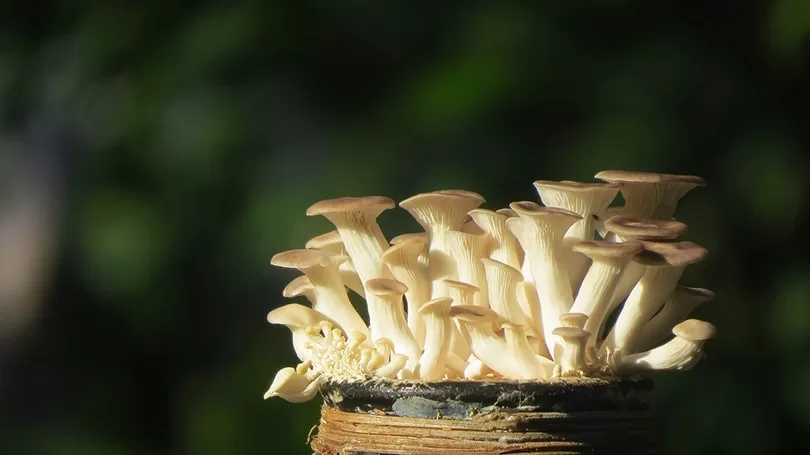The pot size for your succulent should be slightly larger than the root system of the plant. The pot should have a drainage hole to allow excess water to escape and prevent the roots from sitting in water, which can lead to rot. A pot that is 1-2 inches larger than the root system is a good starting point.
Table of Contents
Do succulents stay the size of their pot?
Succulents can outgrow their pots over time, but they typically grow slowly, so it may take several years for them to do so. Additionally, succulents can be propagated by taking stem or leaf cuttings, which can be planted in new pots to create new plants.
It’s important to note that when a succulent outgrows its pot, it may need to be repotted into a larger container. This will provide the roots with more room to grow, and will help the plant to continue to thrive. Also, when repotting, it’s a good idea to use a well-draining cactus or succulent potting mix, to ensure that the roots are not sitting in water, which can cause rot.

What kind of pot should I put my succulent in?
Succulents can be planted in a variety of pots, including clay, plastic, metal, and ceramic. When choosing a pot, it’s important to consider the material, size, and drainage.
- Clay pots are porous, which means that they allow air to circulate around the roots and can help to prevent water from sitting in the bottom of the pot.
- Plastic pots are lightweight and come in a variety of sizes and shapes, but they do not have the same air-circulating properties as clay.
- Metal pots, like copper or zinc, can also be used for succulents, but they can get too hot in direct sun, and may not have drainage holes.
- Ceramic pots are available in a wide variety of colors and styles, they are heavy and sturdy, but they can also get too hot in direct sun and like metal pots, they may not have drainage holes.
Ultimately, the most important factor is that the pot has a drainage hole at the bottom to allow excess water to escape and prevent the roots from sitting in water. The pot should also be slightly larger than the root system of the plant.
Do succulents get bigger if you put them in a bigger pot?
Succulents will not necessarily get bigger if you put them in a bigger pot, but they will have more room for their root system to grow. A larger pot will also allow for more soil, which can hold more water, which can lead to better hydration for the plant. However, a larger pot does not change the genetics or biology of the plant, therefore it will not affect the growth rate or size of the plant.
It is important to note that when a succulent outgrows its pot, it may need to be repotted into a larger container, this will provide the roots with more room to grow, and will help the plant to continue to thrive. However, repotting them into a bigger pot does not guarantee that the succulent will grow bigger, it just provides them with more room to grow.

How to choose succulent pot size
When choosing a pot size for a succulent, it’s important to consider the size of the root system and the growth habit of the plant. Here are some general guidelines to follow:
- The pot should be slightly larger than the root system of the plant. A pot that is 1-2 inches larger than the root system is a good starting point.
- Take into account the growth habit of the plant. If the succulent is a slow-growing species, a small pot may be suitable for several years. If it is a fast-growing species, you may need to repot it into a larger container more frequently.
- Consider the size of the plant when it is fully grown. Some succulents can grow quite large, so a larger pot will be necessary.
- Make sure the pot has a drainage hole at the bottom to allow excess water to escape and prevent the roots from sitting in water, which can lead to rot.
- Take note of the condition of the roots, if they are pot bound, it’s time to repot, if they are not, wait until they outgrow the pot to repot them.
By following these guidelines, you can ensure that your succulent has the appropriate amount of room for its root system and can continue to thrive.
What food lasts longest without refrigeration?
There are several types of food that can last for a long time without refrigeration, but it depends on the storage conditions and the type of food. Here are some examples of food that can last a while without refrigeration:
- Dry goods such as rice, pasta, flour, sugar, and grains can last for months or even years if stored in a cool, dry place.
- Canned goods, such as fruits, vegetables, meats, and fish, can last for several years if the cans are not damaged and they are stored in a cool, dry place.
- Honey can last for many years without refrigeration.
- Hard cheeses like cheddar, parmesan and gouda can last for several weeks if stored in a cool and dry place.
- Dried fruits, such as raisins, apricots, and figs, can last for several months if stored in an airtight container in a cool, dry place.
- Jams, jellies, and preserves can last for several months if stored in a cool, dry place.
It’s important to note that these foods should not be exposed to high temperature, humidity, or direct sunlight. Also, it’s important to check the expiration date and discard any food that appears spoiled or has a strange odor.







